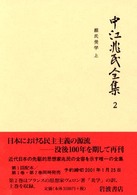- ホーム
- > 洋書
- > 英文書
- > Politics / International Relations
Full Description
Greater, lesser, or just different than the sum of their parts? For all their prominence in global affairs, international organizations remain relative strangers from the perspective of international legal theory. Drawing insights from philosophical discourse, this book moves past binary models that would have international organizations either be nothing over and above their members or simply analogous to them. Rather than compare international organizations and their members, Chasapis Tassinis asks us to understand them both as manifestations of communal organization and what international law recognizes as 'public' authority. Theorizing international organizations as only a branch within a broader family of corporate entities, this book allows us to untangle old doctrinal puzzles. These include the extent to which international organizations are bound by customary international law and can contribute to its formation, or whether they enjoy a legal personality that is opposable to members and non-members alike.
Contents
Introduction; 2. The problem of situating international organizations in relation to States as species of legal actors; 3. The problem of analytically distinguishing international organizations from their members; 4. Common assumptions about the State when theorizing international organizations; 5. Looking for 'Real' Entities: insights from philosophical discourse; 6. Corporate existence as a problem of starting assumptions about members' existence; 7. Institutional genealogy as the foundation for theorizing international organizations; 8. International organizations as institutions distinct from their members; 9. International organizations and customary international law; Conclusion; Bibliography.

![頼れるドクター田園都市・横浜 〈vol.18 2025-202〉 - 私たちの街のドクター111名 特集1:地域想いのクリニック/特集2:検査・検診の工夫で患者 [テキスト]](../images/goods/ar2/web/imgdata2/49114/4911402199.jpg)






